SUMMARY
This is AI generated summarization, which may have errors. For context, always refer to the full article.

MANILA, Philippines – As part of President Ferdinand Marcos Jr.’s ambitious “Build Better More” program, the Department of Transportation’s (DOTr) budget for 2024 is set to double from P106 billion in 2023 to P214.3 billion.
The transportation sector is one of the 10 priority sectors identified under the 2024 national budget, placing sixth in terms of amount allocated. All in all, the DOTr will receive about 3.7% of the entire nation’s budget.
Of the P214.3 billion going to the DOTr, P187.2 billion will go to the Office of the Secretary, which handles most of the department’s big programs and projects. The rest is distributed to other attached agencies, like the Philippine Coast Guard, Office for Transportation Security, and Maritime Industry Authority.
But what will all these hundreds of billions be used for? Rappler went through the DOTr-Office of the Secretary’s proposed budget allocation to make sense of the numbers.
The bulk of the budget will go to the DOTr's rail transport program, taking 76% with an allocation of P163.7 billion. Meanwhile, the other sectors will get a comparatively small cut. The land public transportation program will receive the next largest amount at P6.4 billion, followed by the aviation infrastructure program at P6.1 billion, the motor vehicle regulatory program at P2 billion, and the maritime infrastructure program at P988 million.
To put that in perspective, the budget for rail alone is more than 10 times the allocations for road, aviation, and maritime combined.
Here's a closer look at the projects under each transport sector. To see the comparative amounts spent on each program, click the arrow in the visualization.
Rail transport
The transportation budget in 2024 is tilted heavily towards rail infrastructure mainly because of two massive projects: the North-South Commuter Railway (NSCR) and the Metro Manila Subway.
The 147-kilometer NSCR was touted as the biggest infrastructure project under former president Rodrigo Duterte's "Build Build Build" program. The NSCR's elevated, double-track, and electrified train system will be built directly on top of the Philippine National Railway's (PNR) existing tracks. Commencing partial operations in 2027, the NSCR aims to cut travel time from Clark to Calamba to just two hours. Its total cost is P628.42 billion, which is financed in part by the Japan International Cooperation Agency and the Asian Development Bank.
The other big-ticket project, the Metro Manila Subway, kicked off tunneling and excavation works early this year. Originally set to start partial operations by 2022, the delayed subway's first three stations will be ready by 2027, according to Marcos. Once completed, it will stretch from Valenzuela City to Parañaque City, cutting travel time from Quezon City to the Ninoy Aquino International Airport (NAIA) to just 35 minutes.
The DOTr is also shelling out more than P10 billion all in all to operate and rehabilitate the heavily-subsidized Metro Rail Transit (MRT) Line 3. The government currently subsidizes 76.8% of the railway's expenses, which may grow even higher as a recent petition to hike the MRT3's fares didn't push through.
Other railway projects include the Light Rail Transit (LRT) Line 1 Cavite extension, that will add stations to the LRT1 all the way to Bacoor, Cavite; the PNR South Long Haul project, that will stretch from Calamba, Laguna, to Daraga, Albay; and the MRT4, that will link parts of eastern Metro Manila, like San Juan and Pasig, to Cainta and Taytay in Rizal.
These tens of billions are spent with the dream of linking up Luzon's network of railways: the NSCR, PNR Clark 1, PNR Clark 2, PNR Calamba, LRT lines 1 and 2, MRT line 3, and the planned Metro Manila Subway.
Road transport
A distant second in terms of budget allocation is road transport, receiving a total of about P8.4 billion for both the land public transportation program and motor vehicle regulatory program.
The biggest chunk, or P2.5 billion, will go to the fuel subsidy program of the government, taking the form of a cash handout for modern jeepney drivers, modern UV express drivers, tricycle drivers, and delivery riders. Earlier this August, the DOTr announced that it will distribute P2.95 billion to some 1.6 million drivers in the face of rising fuel prices.
The DOTr is also funding several bus programs in major cities: Metro Manila, Davao, and Cebu. The privatization process has already commenced for the EDSA Busway, which Transportation Secretary Jaime Bautista previously said could happen as early as third quarter of 2023.
Meanwhile, Davao City is planning to set up the country's first electric bus fleet in an "intelligent transport system" comprising of 1,100 buses and 1,000 bus stops. And after a decade-long delay, the Cebu Bus Rapid Transit will continue its development in 2024 after breaking ground earlier this year.
The DOTr is also allocating P500 million for active transport, a bike share system, and a safe pathways program. These include the construction of permanent and protected bike lanes, bike racks, and pedestrian pathways and sidewalks. It's also continuing to fund the EDSA Greenways project, the elevated pedestrian walkway which has already been delayed thrice and is now set for completion in 2027.
Aviation infrastructure
Aviation infrastructure receives the third biggest allocation at P6.1 billion. Of this, over a quarter will go to the country's main international airport. Secretary Bautista told Rappler that the DOTr will commence "initial talks" with interested bidders within the year for the rehabilitation and privatization of NAIA. If things go according to the terms of the solicited proposal, around P170.6 billion will be spent by the government and private sector to vastly improve the capacity and service of NAIA.
Meanwhile, around 20% of the aviation budget will go to upgrading the country's CNS/ATM system (Communications, Navigation, Surveillance/Air Traffic Management), which allows air traffic controllers to safely guide planes. The failure of the current CNS/ATM led to the infamous shutdown of Philippine airspace for several hours during New Year's Day. Bautista later said that the government would need a "huge amount of money" – possibly more than the P13 billion spent on the current system – to upgrade the aging equipment. (READ: What caused the January 1 air traffic mess and what should be done about it?)
Considering that the country will still need another nearby airport even after NAIA's rehabilitation, the government is also continuing to fund the development of the Bulacan International Airport. The sprawling airport complex by San Miguel Corporation has recently been accused of aggravating the flood levels in Bulacan.
Roughly half of the aviation budget will also go to developing regional airports outside the Greater Manila Area. These include the Kalibo International Airport, the main international gateway to Boracay, and Laoag International Airport, right beside the Marcoses' hometown in Ilocos Norte.
Maritime infrastructure
Despite the Philippines' archipelagic geography, the maritime sector will receive by far the lowest share of the budget at less than P1 billion for all projects combined.
The two biggest projects – the Maritime Safety Improvement Project and Maritime Safety Capability Improvement Project Phase 1 – are both foreign-assisted. In his speech about the budget, Marcos claimed that the P625 million going to the Maritime Safety Improvement Project will "improve reliability and ensure sustainable maritime transportation safety." He said the second project will "improve response capabilities in maritime incidents and enhance the conduct of maritime law enforcement and security operations."
The rest of the maritime infrastructure budget will go to developing regional ports in Ilocos Sur, Eastern Samar, Palawan, Quezon, Iloilo, and Romblon.
Other notable programs
The rest of the budget will be spent mostly on the department's regular program, like general management and supervision, feasibility studies, and personnel benefits. This also includes almost P2.8 billion allocated for right-of-way acquisitions for the different infrastructure projects of the DOTr.
Perhaps the most glaring omission from the budget is the controversial public utility vehicle (PUV) modernization program. An official from the DOTr's roads sector confirmed to Rappler that the program does not yet have any funds allocated for next year.
"Wala po budget for next year. I-lobby pa po during budget hearing (There's no budget for next year. We'll lobby for it during the budget hearing)," the official told Rappler on Monday, August 14.
The government's push to phase out traditional jeepneys – part of the multi-step PUV modernization program – incited a transport strike earlier this year. In response, the DOTr has promised giving subsidies of up to P360,000 to operators struggling to upgrade their vehicles. But even then, this amounts to only 28% of the cost of lower-end modern jeepneys. And with no budget allocated for the program next year, exactly where the subsidies will come from remains unclear. (READ: EXPLAINER: Why some transport groups support jeepney modernization)
Transportation officials are set to present the budget to the House of Representations on September 4.
– Rappler.com
Add a comment
How does this make you feel?



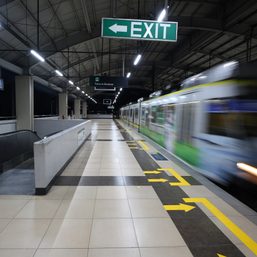


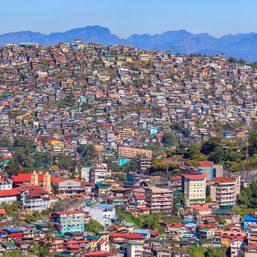




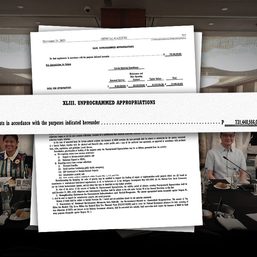
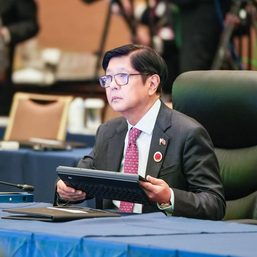
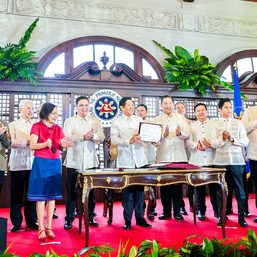
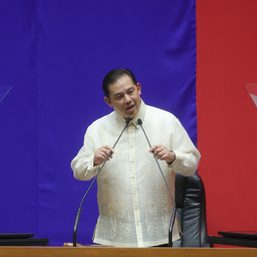
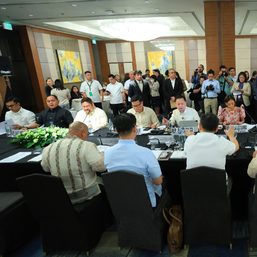
There are no comments yet. Add your comment to start the conversation.